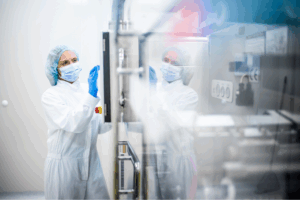July 10, 2025
Few sectors of agriculture are as technologically advanced and operationally complex as poultry and egg production. From automated feeding systems to climate-controlled environments and commodity market volatility, the risks are multifaceted and the stakes are high. It’s essential that insurers and claims professionals serving these sectors understand the intricate systems involved. This blog explores the key components of poultry and egg operations and how insurance professionals can better assess, mitigate and manage losses in these industries.
Modernized systems
Today’s egg operations are marvels of engineering. Two primary housing systems dominate the landscape: conventional (caged) and cage-free systems. Caged systems are designed for efficiency, with multitiered layouts, automated feeding and watering, and conveyor-based manure removal. Cage-free systems, on the other hand, prioritize bird mobility and natural behaviors — requiring more complex ventilation and nesting solutions.
Both systems rely heavily on environmental control technologies. These include temperature sensors, ventilation fans and backup generators with automatic transfer switches (ATS). Even a brief failure in these systems can lead to catastrophic losses, making their maintenance and monitoring a top priority for risk assessment. Sophisticated environmental control systems maintain precise temperature zones and airflow, using real-time data to adjust conditions automatically. If a power outage, system failure or undesired change in environmental conditions occurs, alarms automatically notify producers immediately. Understanding how these systems function — and fail — becomes very important during loss assessments.
Feeding systems in egg operations are also highly automated. Feed bins connect to augers that distribute customized feed formulations throughout the facility. These systems ensure optimal nutrition with minimal human intervention. Egg collection is equally advanced. Conveyor belts transport eggs from nesting areas to elevators and then to centralized conveyors that lead to processing plants. There, eggs are washed, graded and packaged using robotics. The entire process — from production to packaging — is constantly monitored by advanced software systems. This level of automation reduces labor costs and inefficiencies but increases reliance on machinery — another key consideration for insurance purposes.
Poultry processing operations utilize more advanced equipment and technology, creating a distinct set of parallel challenges to navigate. Once birds reach processing facilities, they enter climate-controlled holding areas designed for comfort and welfare. The processing line includes automated handling, cleaning, portioning and chilling systems. Secondary processing transforms cuts into consumer-ready products, and packaging systems ensure proper labeling and quality control. Under constant monitoring by the U.S. Department of Agriculture (USDA), these facilities must adhere to strict food safety standards and require daily sanitation. Any system disruption can halt operations, making downtime extremely costly.
Proactive loss prevention
Poultry and egg operations are time-sensitive ecosystems. Feed deliveries, environmental controls and production schedules have to align perfectly. A disruption in one area can ripple through the entire operation, affecting supply chains and market commitments. Disaster recovery plans must prioritize environmental stabilization, equipment assessment, alternative supply plans and communication with supply chain partners. Insurance professionals should evaluate not just the physical damage but also the operational and reputational impacts of a disruption.
Preventing losses starts with regular maintenance and emergency planning. Inspections of environmental controls, feeding systems and processing equipment can identify issues before they escalate. Emergency power systems and response protocols ensure rapid recovery when problems arise. Clear communication with market partners during disruptions helps manage expectations and preserve relationships — an often-overlooked aspect of loss mitigation.
Insurance coverage and specialized expertise
Poultry and egg operations require specialized insurance coverage. Policies must address physical assets, business interruption, supply chain disruptions and livestock mortality. Documentation is key: Production records, environmental logs and maintenance histories support both prevention and claims processing.
Understanding commodity markets is also vital. Poultry and eggs are subject to price volatility, especially during crises like the ongoing Highly Pathogenic Avian Influenza (HPAI) outbreak. This virus has decimated flocks and driven egg prices to record highs. Recovery can take over a year for an egg producer, significantly impacting business interruption claims.
Effective loss management requires more than general knowledge. Insurance and claims professionals serving this sector must understand production biology, processing technology and market dynamics. Such expertise enables accurate damage assessments and realistic recovery timelines. When a loss occurs, knowing how systems interact — and how failures cascade — can make the difference between a smooth recovery and prolonged disruption.
The first few hours after a disruption are critical. Stabilizing the environment, protecting equipment and notifying partners set the tone for recovery. Long-term plans should focus on restoring operations, rebuilding supply chains and enhancing resilience. Maintaining customer relationships during recovery is equally important. Transparent communication, alternative supply plans and consistent quality standards help preserve market position.
Final thoughts
Poultry and egg production are high-stakes, high-tech industries. For insurers and claims professionals, understanding their complexities is essential for effective risk management. From environmental controls to commodity pricing, every detail matters. By combining technical knowledge with strategic insight, insurers can support producers through disruptions and help ensure the long-term stability of these vital sectors.
> Learn more: explore our commercial claims adjusting capabilities and the equipment consulting expertise of our forensic engineering division, EFI Global



